Hello to all the dedicated teachers out there! If the rapid pace of technological terms and tools in education has ever left you scratching your head—ChatGPT 4, Custom Instructions, Plugins, and the emerging GPTs—you’re in good company. It’s like there’s a whole new language to learn on top of everything else a teacher does. But there’s good news: it’s less complicated than it seems.
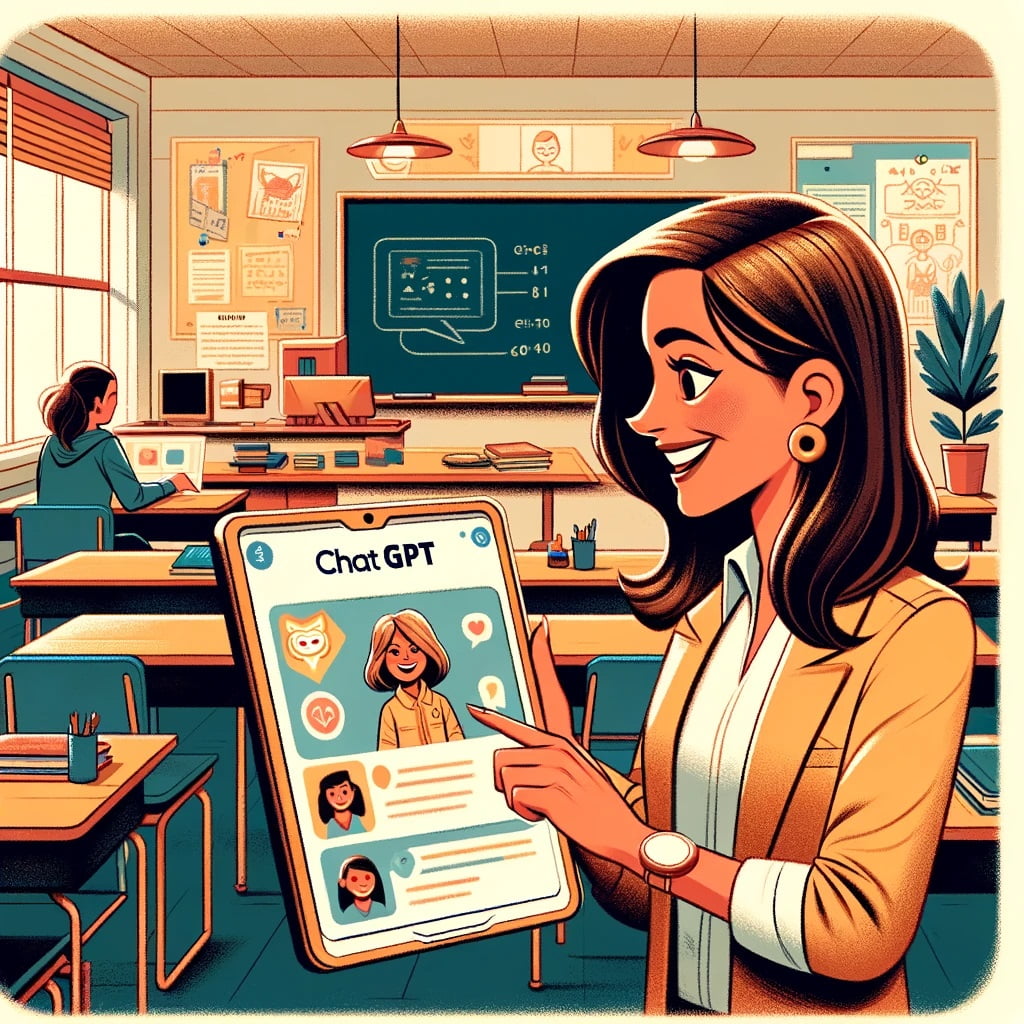
This post is your straightforward guide to these AI features. We’ll break down each one, showing you how they can streamline your workload and enhance your teaching without the tech overwhelm. By the end of this article, you’ll have a clear understanding of each term and a glimpse into how they can fit into your classroom, all explained in simple terms.
So, let’s get started on this journey of turning the ‘intimidating’ into the ‘intuitive’ with AI in education.
The Lesson Plan: Customized Instructions
Imagine you’re preparing a lesson plan. You know your students, their strengths, their needs, and exactly what you want to achieve by the end of the class. Customized instructions for ChatGPT 4 work much like that. They’re special directions you give to this AI tool to help it understand better what you need from it.
Tailoring ChatGPT to Your Classroom
When you’re using ChatGPT 4, it’s like having a conversation with a very attentive colleague. You can provide details about your teaching style, your students’ learning preferences, or any specific goals you have. This is the “What would you like ChatGPT to know about you to provide better responses?” part. It’s where you can tell ChatGPT about the context it needs to consider when helping you out.
Shaping the AI’s Responses
Then there’s the “How would you like ChatGPT to respond?” section. Here, you can guide how ChatGPT crafts its answers. Do you want a detailed explanation or a brief summary? Should ChatGPT use simple language for younger students or more complex terms for advanced learners? It’s your call.
Example: Planning a Middle School Social Studies Lesson
Let’s say you’re planning a lesson on ancient Egypt for your seventh graders. You want to create an engaging discussion around the social hierarchy of that time.
What ChatGPT Should Know:
- “My students have just started learning about ancient Egypt, and they love interactive activities. I’m looking for resources that are visually engaging and can be used in a group discussion.”
How ChatGPT Should Respond:
- “Please provide a concise list of resources, including a brief description of each. They should be suitable for a 45-minute class and encourage critical thinking and collaboration among middle schoolers.”
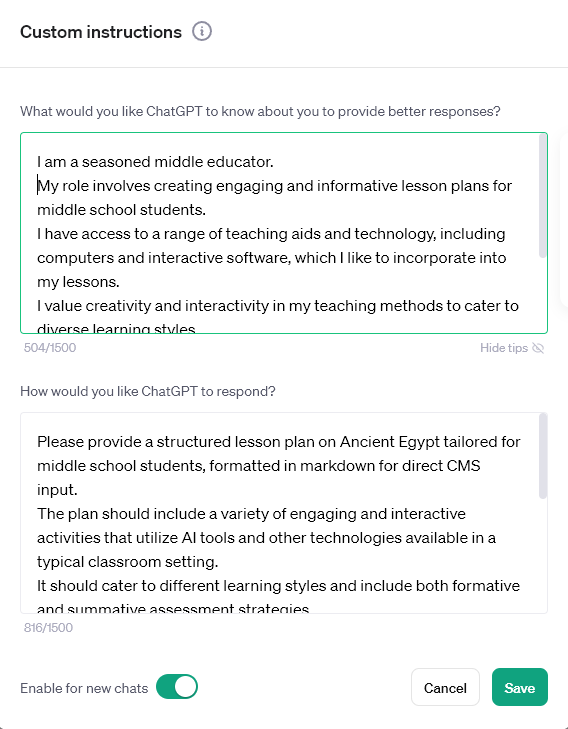
With these instructions, ChatGPT 4 can generate a tailored list of resources and activities that fit right into your lesson plan, saving you time and adding a spark to your social studies class.
The Educational Tools: Plugins
In the dynamic world of teaching, having the right tools can make all the difference. That’s where plugins come in. Think of plugins as those special attachments you add to a power drill to make it more than just a drill. Suddenly, it can sand, grind, polish, and do things it couldn’t do before. Plugins for ChatGPT 4 are similar; they enhance the AI’s capabilities, allowing it to perform tasks that go beyond its basic functions.
Extending ChatGPT 4’s Capabilities
Plugins are like digital extensions that we can attach to ChatGPT 4 to give it new abilities. They can turn the AI from a knowledgeable assistant into a multifunctional educational powerhouse. With plugins, ChatGPT can access a broader range of information and provide more specialized responses.
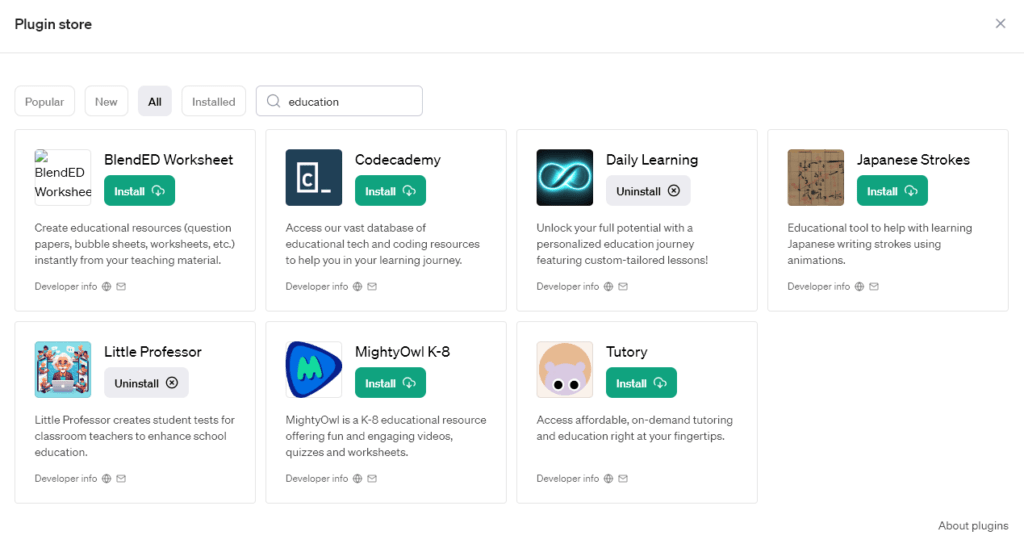
Real-World Examples for Teaching
From my own treasure trove of resources, here are a couple of examples of how plugins can be a game-changer in your classroom:
- EdX ChatGPT Plugin: Imagine connecting your lesson plan with courses from top universities. Need to dive deeper into climate change? This plugin can pull in university-level content to enrich your curriculum.
- Wolfram ChatGPT Plugin: It’s like having a math and science expert on call. Whether you’re generating complex math problems or need real-time data for a science project, this plugin has got you covered.
- Chess ChatGPT Plugin: Use the strategic game of chess to teach critical thinking and problem-solving. This plugin can help you set up a virtual chess club or integrate chess strategies into your lessons.
How Plugins Can Transform Your Teaching
Let’s take a closer look at how these plugins can specifically help with teaching:
EdX ChatGPT Plugin: You’re planning a unit on the Renaissance. With this plugin, you can quickly find multimedia resources from various university courses to create a vibrant, historically accurate picture of the era for your students.
Wolfram ChatGPT Plugin: Preparing a lesson on astronomy? Use this plugin to fetch the latest astronomical data or create interactive models that show planetary movements.
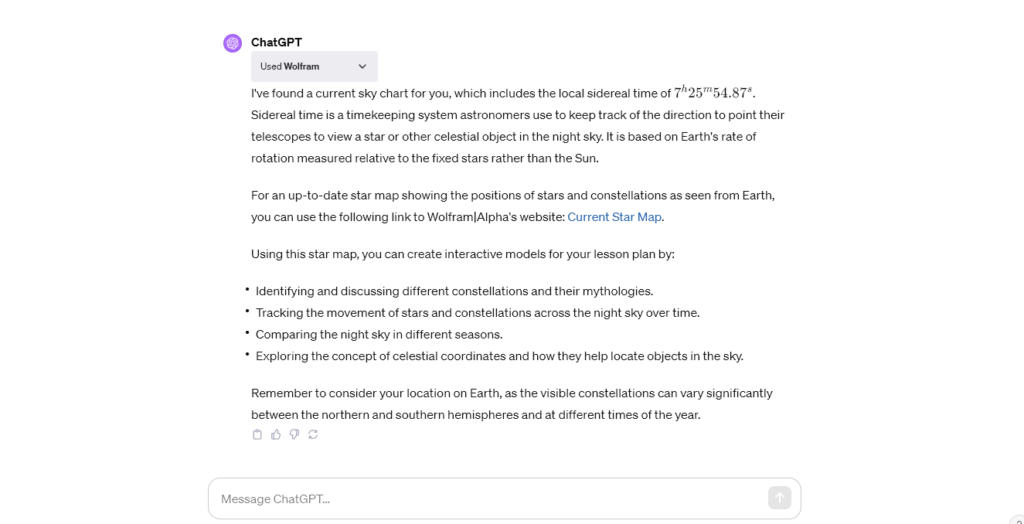
Chess ChatGPT Plugin: Want to teach logical reasoning? Introduce your students to chess strategies through this plugin and watch them apply these tactics in problem-solving scenarios.
By integrating these plugins, you can enhance the learning experience, making it more immersive and interactive. They’re not just about using technology for the sake of it; they’re about leveraging these digital advancements to create a more engaging and effective learning environment.
The Curriculum Developer: GPTs
When we talk about GPTs, we’re referring to the foundational technology that powers applications like ChatGPT 4. Think of GPTs as the underlying engine or the ‘curriculum’ that shapes the way these applications can interact and assist us. They’re the core from which all the tailored experiences and functionalities are developed.
What Exactly Are GPTs?
In the simplest terms, GPTs (Generative Pre-trained Transformers) are a type of AI that’s designed to understand and generate human-like text based on the input they receive. They’re like the brain behind the AI, trained on a vast amount of information to help them respond to a wide range of queries and perform various tasks.
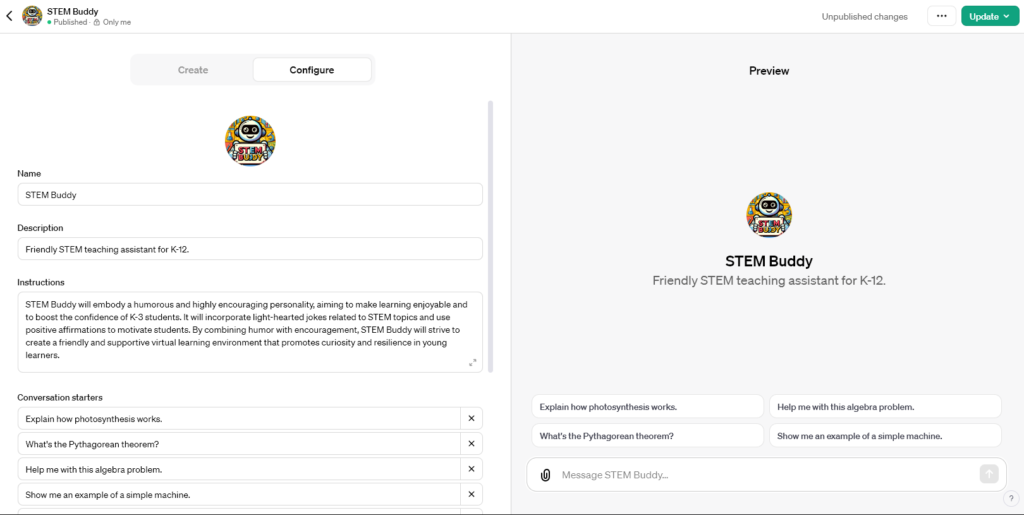
The Potential for Teachers
For teachers, the future potential of GPTs is like having a digital teaching assistant who’s not only well-read but also incredibly adaptable. While they’re not widely available just yet, the idea is that teachers will be able to create multiple GPTs tailored for specific needs, whether it’s lesson planning, creating content for different subjects, or even addressing the unique needs of each class.
Custom Instructions vs. Plugins vs. GPTs
Let’s break down the differences between these tools in a way that’s as easy as pie:
| Feature | Custom Instructions | Plugins | GPTs |
|---|---|---|---|
| Purpose | To guide ChatGPT in a specific task | To extend ChatGPT’s capabilities | To create a foundation for AI applications |
| Use Case | Tailoring responses to your needs | Adding new functions to ChatGPT | Building specialized AI tools |
| Customization | Personalized guidance for ChatGPT | Specific add-ons for extra features | Fully customizable AI models |
| Availability | Available in ChatGPT 4 | Available as add-ons | Future feature, not yet widely available |
Examples of GPT Agents for K-12 Teachers
Imagine the kinds of GPTs you could create:
- The History Buff: A GPT that’s a whiz at historical dates and events, perfect for creating engaging history lessons.
- The Grammar Guru: A GPT that helps students with grammar exercises and provides instant feedback on their writing.
- The Science Specialist: A GPT that’s all about science, ready to answer questions from curious young minds and suggest experiments.
- The Math Mentor: A GPT that can walk students through complex math problems step by step.
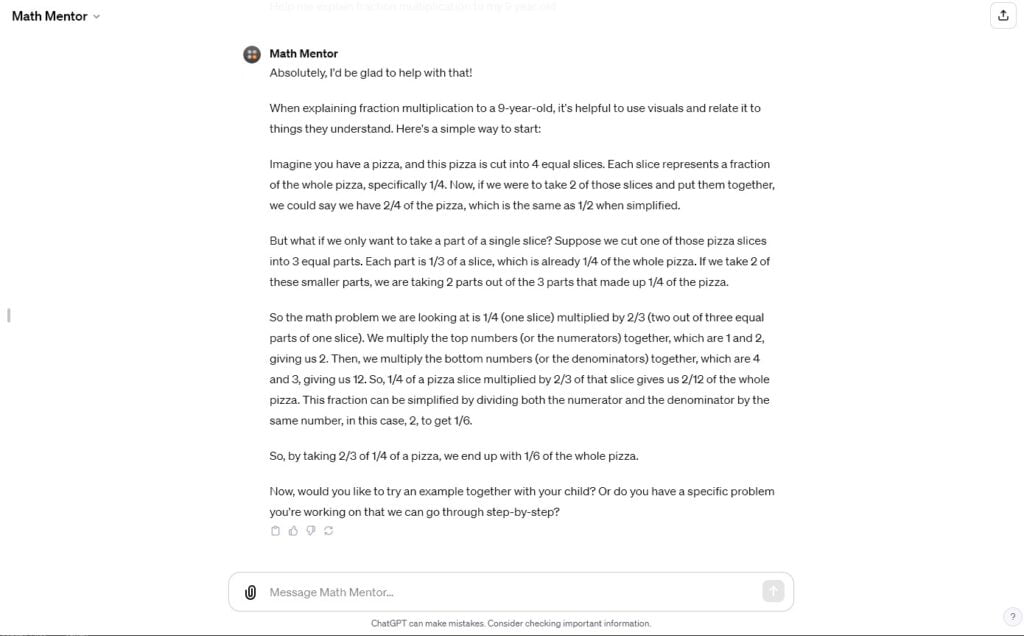
These are just a few examples of how GPTs could one day support teachers in creating a more personalized and effective learning environment. The future is bright, and it’s filled with the promise of AI that works hand in hand with educators to inspire the next generation.
Embracing AI: The Road Ahead for K-12 Education
As we draw the curtains on our discussion, it’s evident that AI is not just knocking on the doors of K-12 education but is ready to play a pivotal role in its evolution. Tools like ChatGPT 4, Custom Instructions, and Plugins are the harbingers of this change, setting the stage for the even more promising and personalized capabilities of GPTs.
The Takeaway
These AI advancements are designed to complement the irreplaceable creativity and empathy that you, as educators, bring to your classrooms. They’re here to streamline your tasks, enrich your lesson plans, and make learning more captivating for your students.
Your Next Steps
While GPTs are not yet a part of our everyday toolkit, their potential is immense. As they become available, I’ll be right here with you, creating a series of ‘How-To’ posts to guide you through creating your own GPTs for the classroom. We’ll take it step by step, ensuring you have all the support you need to integrate these tools with confidence and creativity.
Let’s Keep the Conversation Going
I’m eager to hear your thoughts and answer any questions you may have. What are your hopes for AI in your classroom? How do you envision using these tools to enhance learning? Your insights are invaluable, and together, we can navigate this new digital frontier.
Here’s to the next chapter in teaching, where AI doesn’t just meet the chalkboard but works alongside us to craft an educational experience that’s as enriching as it is exciting.
Frequently Asked Questions
What exactly is ChatGPT 4?
OpenAI developed ChatGPT 4, an AI language model. It’s designed to understand and generate human-like text, helping users with a variety of tasks such as answering questions, creating content, and more. It’s the fourth iteration of the GPT series, which means it’s more advanced in terms of understanding context and generating responses.
How do Custom Instructions work with ChatGPT 4?
Custom Instructions allow you to provide specific guidance to ChatGPT 4 on how you want it to handle a task. For example, you can instruct it to use a particular tone, focus on certain topics, or provide a specific type of information. This helps tailor the AI’s responses to better suit your educational needs.
Can anyone use Plugins with ChatGPT 4?
Yes, plugins are available for anyone using ChatGPT 4. They are additional tools that can be attached to the AI to enhance its capabilities, such as accessing external databases or providing specialized functions like mathematical calculations or language translations.
What are GPTs, and how are they different from ChatGPT 4?
GPTs are the underlying AI models that power applications like ChatGPT 4. They are the core technology that understands and generates text. ChatGPT 4 is a specific product that uses a GPT model to interact with users and assist with tasks.
When will GPTs be available for me to create custom versions for my classroom?
The ability to create custom GPTs is not widely available as of now. OpenAI is working on making this technology more accessible, and as it becomes available, I will provide resources and guides to help you create GPTs tailored for your classroom needs.
How can I prepare for the integration of GPTs into my teaching?
Stay informed about AI advancements and familiarize yourself with current tools like ChatGPT 4. You can also start thinking about the areas of your teaching that could benefit from AI assistance. Once GPTs are available, you’ll have a clearer idea of how to integrate them into your classroom effectively.







Recent Comments